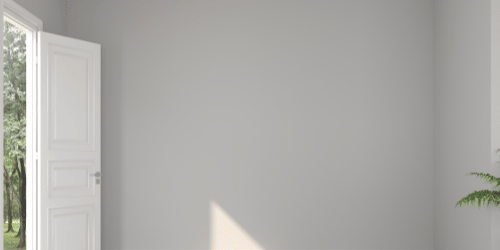When renovating or remodeling your home, especially if you’ve removed walls to. Create an open-concept space, reconfiguring lighting and light switches becomes essential. Properly addressing these changes ensures both functionality and aesthetics. In this blog post, we’ll explore practical tips, common questions, removing walls, and expert advice related to this crucial aspect of home improvement.
Reconfiguring lighting and light switches after removing walls requires thoughtful planning and execution. By following best practices, you can enhance your living space while maintaining safety and convenience.
Evaluating Existing Fixtures
Assess the Layout
Begin by thoroughly understanding the new room layout to effectively plan for lighting. Start by identifying key areas that require illumination, such as seating zones where ambient light is needed for comfort and relaxation. Workspaces that demand task lighting for activities like reading or cooking, and accent features that benefit from focused lighting to highlight artwork, architectural details, or decor. By considering the specific needs of each area, you can create a balanced lighting plan that enhances both functionality and aesthetics, ensuring that every part of the room is appropriately lit for its intended purpose.
Check Existing Fixtures
Evaluate the condition of existing light fixtures to determine if they are outdated, damaged, or incompatible with the new design. Check each fixture for wear and tear, such as discoloration, rust, or broken components that could affect safety and functionality. Assess whether the style, finish, and size of the fixtures align with the updated room aesthetics and design vision. If the fixtures are not working correctly, show signs of damage, or clash with the new decor, it may be necessary to replace them to achieve a cohesive and modern look. This evaluation helps ensure that the lighting not only functions well but also complements the overall design scheme.
Consider Natural Light
Leverage natural light sources, such as windows and skylights, to reduce reliance on artificial lighting. Natural light not only enhances the aesthetic appeal of a space by providing a warm and inviting ambiance. But it also offers energy savings by decreasing the need for electric lighting during the day. Strategically place furniture and decor to maximize the flow of natural light, and use light, reflective colors on walls and surfaces to amplify its effect. Consider adding sheer curtains or blinds that can be adjusted to control the amount of sunlight entering the room.
Choosing New Fixtures
Type of Lighting
Decide on a layered lighting strategy by incorporating ambient, task, and accent lighting to create a well-balanced and functional space. For ambient lighting, which provides overall illumination, consider options like pendant lights, chandeliers, or recessed lights to evenly light the room. For task lighting, which focuses on specific areas like workspaces or reading nooks, choose fixtures such as under-cabinet lights, desk lamps. Or wall-mounted adjustable lights to provide direct, focused illumination. For accent lighting, which highlights artwork, architectural features, or decorative elements, consider using wall sconces, track lighting, or spotlights to draw attention to these focal points.
Dimmer Switches
Install dimmer switches to provide flexibility and control over lighting levels, allowing you to adjust the brightness. According to the time of day or the desired mood. Dimmer switches are a versatile addition to any room, offering the ability to create a soft, cozy atmosphere for relaxation or a bright, energizing environment for activities. They also help extend the life of light bulbs and reduce energy consumption by allowing lights to operate at lower intensities. By installing dimmers, you can easily tailor the lighting to suit different occasions and preferences, enhancing both comfort and energy efficiency.
LED Technology
Opt for energy-efficient LED bulbs to enhance your lighting setup. LEDs not only last significantly longer than traditional incandescent or fluorescent bulbs but also offer superior illumination with lower energy consumption. Their longevity reduces the frequency of bulb replacements, saving both time and money. Additionally, LED bulbs produce less heat, which contributes to a more comfortable indoor environment and further reduces energy costs. By choosing LEDs, you ensure brighter, more reliable lighting while also promoting energy efficiency and sustainability in your home.
Wiring and Electrical Considerations
Consult an Electrician
If you’re not experienced with electrical work, it’s crucial to hire a professional electrician. They will ensure safe and proper rewiring, as well as secure all connections, adhering to local codes and safety standards. A qualified electrician brings expertise to handle complex installations and troubleshoot potential issues, minimizing risks of electrical hazards and ensuring that your lighting system functions efficiently and reliably. Investing in professional help not only guarantees the safety of your home but also ensures a high-quality, well-installed lighting system.
Rewiring Walls Removing Walls
Plan for concealed wiring within walls by considering that this process may involve cutting drywall and patching it afterward. Concealing wiring provides a clean and aesthetically pleasing look, avoiding visible cables and outlets. However, it requires careful planning to ensure that all wiring is properly routed and secured within the wall cavities. This often involves cutting into the drywall to access and install the wiring, followed by patching and repainting the wall to restore its appearance. Accurate measurements and precise cutting are essential to minimize damage and ensure a seamless repair. Proper planning and execution of concealed wiring can enhance the overall design and functionality of your lighting system.
Switch Placement
Strategically position light switches for convenience, ensuring they are easily accessible in key areas of your home. For spaces with multiple entry points or where you need to control lights from different locations, such as staircases and hallways, consider installing three-way switches. These allow you to operate a single light from two separate locations, enhancing functionality and ease of use. Proper placement of switches not only improves convenience but also helps avoid the frustration of having to navigate dark areas or fumble for switches in less accessible spots. By planning your switch locations thoughtfully, you can enhance both the usability and overall comfort of your lighting system.
Addressing Switch Locations
Old Switches
If you’ve removed a wall with a switch, you’ll need to relocate it to a nearby wall or consider installing a wireless smart switch. Relocating the switch involves running new wiring to a new location, which may require cutting into walls and patching afterward. An alternative solution is to install a wireless smart switch, which operates without the need for physical wiring and can be easily mounted on any wall. Wireless smart switches offer added convenience by allowing remote control through apps or voice commands, making them a flexible option for maintaining functionality in spaces where traditional wiring is not feasible.
Multi-Gang Boxes
Combine switches in multi-gang boxes to save space and maintain a clean, organized appearance. Multi-gang boxes allow multiple switches or outlets to be housed within a single unit, reducing the number of visible plates and creating a streamlined look on your walls. This approach not only conserves wall space but also simplifies the wiring process, providing a more aesthetically pleasing and efficient solution. Ensure that the multi-gang box is installed securely and that all switches are properly labeled to facilitate easy use and maintenance.
Labeling
Clearly label switches to avoid confusion and enhance ease of use. Use descriptive names, such as “Kitchen Island Lights” or “Living Room Overheads,” to ensure that each switch’s function is immediately recognizable. This practice prevents misunderstandings and makes it easier for everyone in the household to operate the lighting system efficiently. Proper labeling also helps during maintenance or troubleshooting, saving time and reducing frustration.
Answering Common Questions
Q1 Should I paint before or after installing light switches?
A1 Paint before installing switches to avoid damaging fresh paint during installation.
Q2 Can I use existing wiring for new fixtures?
A2 It depends. Consult an electrician to assess the wiring’s capacity and safety.
Q3 How do I handle junction boxes?
A3 Junction boxes are essential for connecting wires safely. Install them where needed.
The Impact of Natural Light
Natural light positively affects mood, productivity, and energy efficiency. Consider window placement and use sheer curtains to maximize its benefits.
Seeking Expert Advice
While this blog post provides valuable insights, always consult a professional electrician for personalized guidance. They’ll ensure your lighting and switches meet safety standards and enhance your home’s functionality.
Conclusion
Thoughtful lighting design plays a crucial role in transforming your living space. As you embark on remodeling projects and remove walls, keep the following key points in mind: Reconfiguring lighting and light switches ensures both functionality and aesthetics, allowing you to create a harmonious environment that meets your needs. Evaluate existing fixtures to determine their compatibility with the new layout; outdated or damaged fixtures may require replacement.
Choose the right type of lighting—ambient, task, and accent—and consider installing dimmer switches for added flexibility. Embrace LED technology for its energy efficiency and longevity. For wiring and safety, consult an electrician to handle rewiring and proper connections, strategically address switch locations, and ensure compliance with local codes. Finally, focus on finishing touches by paying attention to cover plates, painting switch plates to match your walls, and exploring smart home integration for added convenience.
Visit us at Pristine Luxury Remodeling
For more information and personalized guidance visit us at Pristine Luxury Remodeling, We specialize in providing exceptional remodeling services that elevate your space into a masterpiece of luxury.







